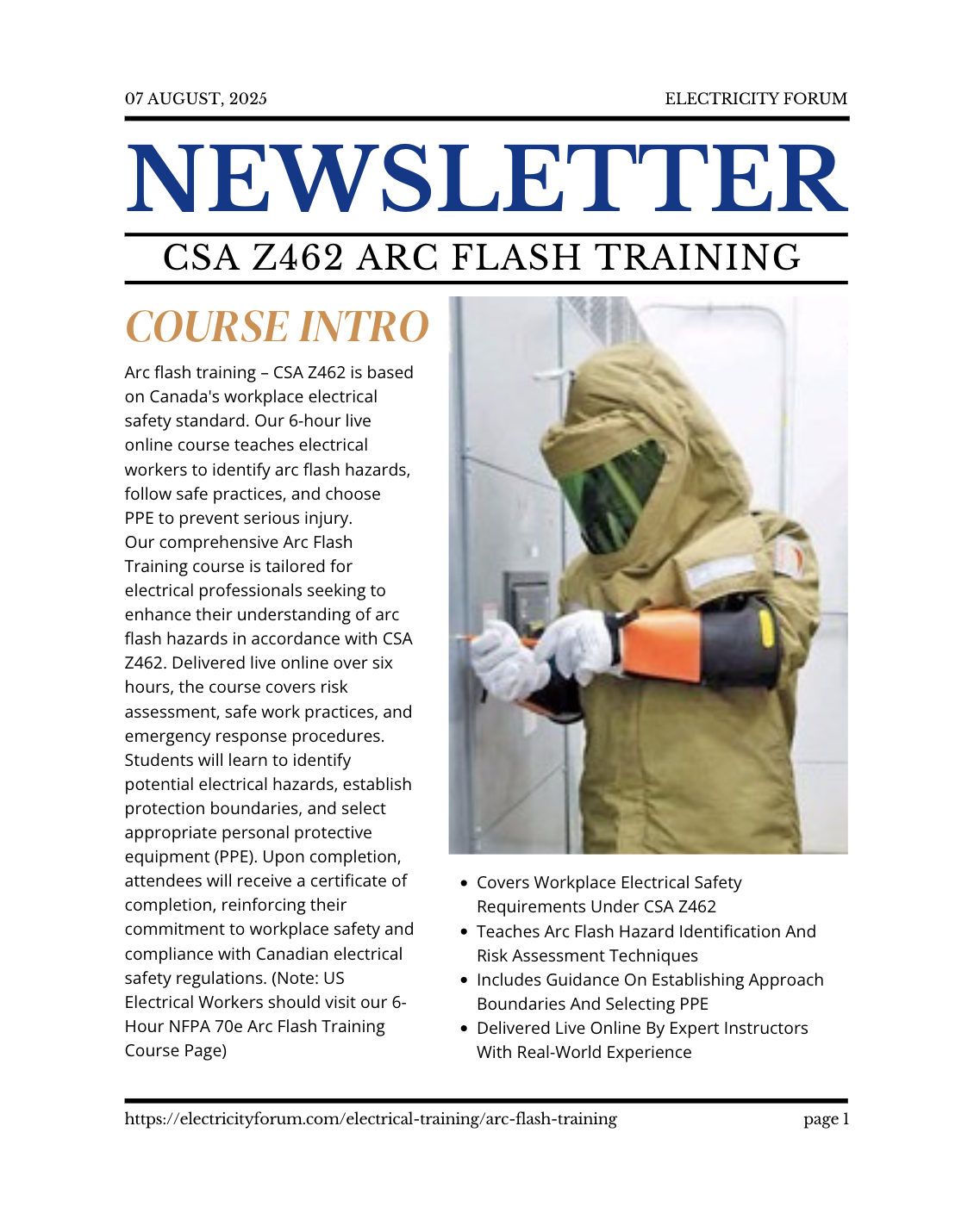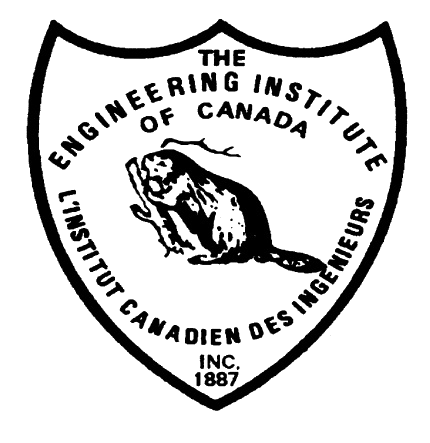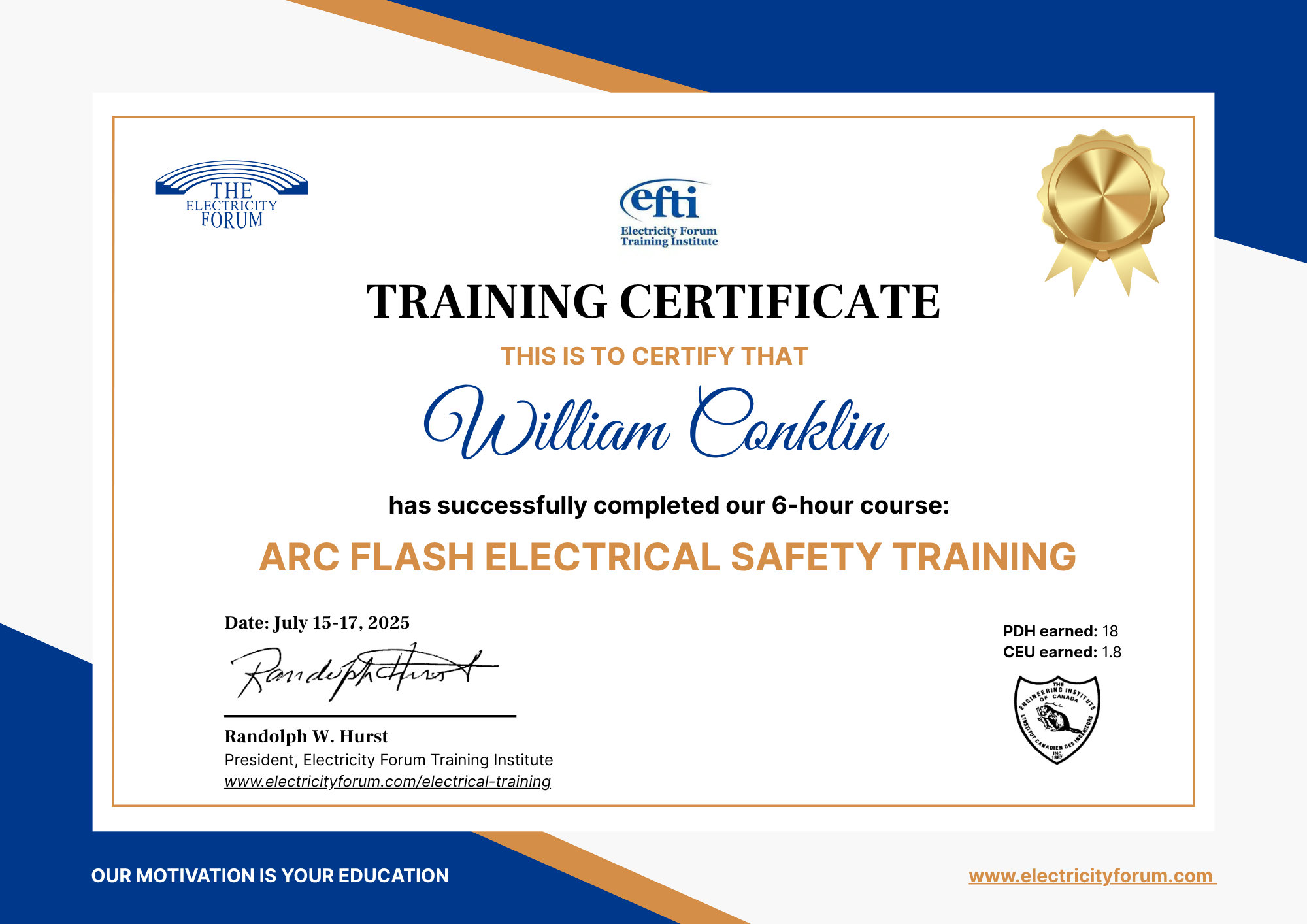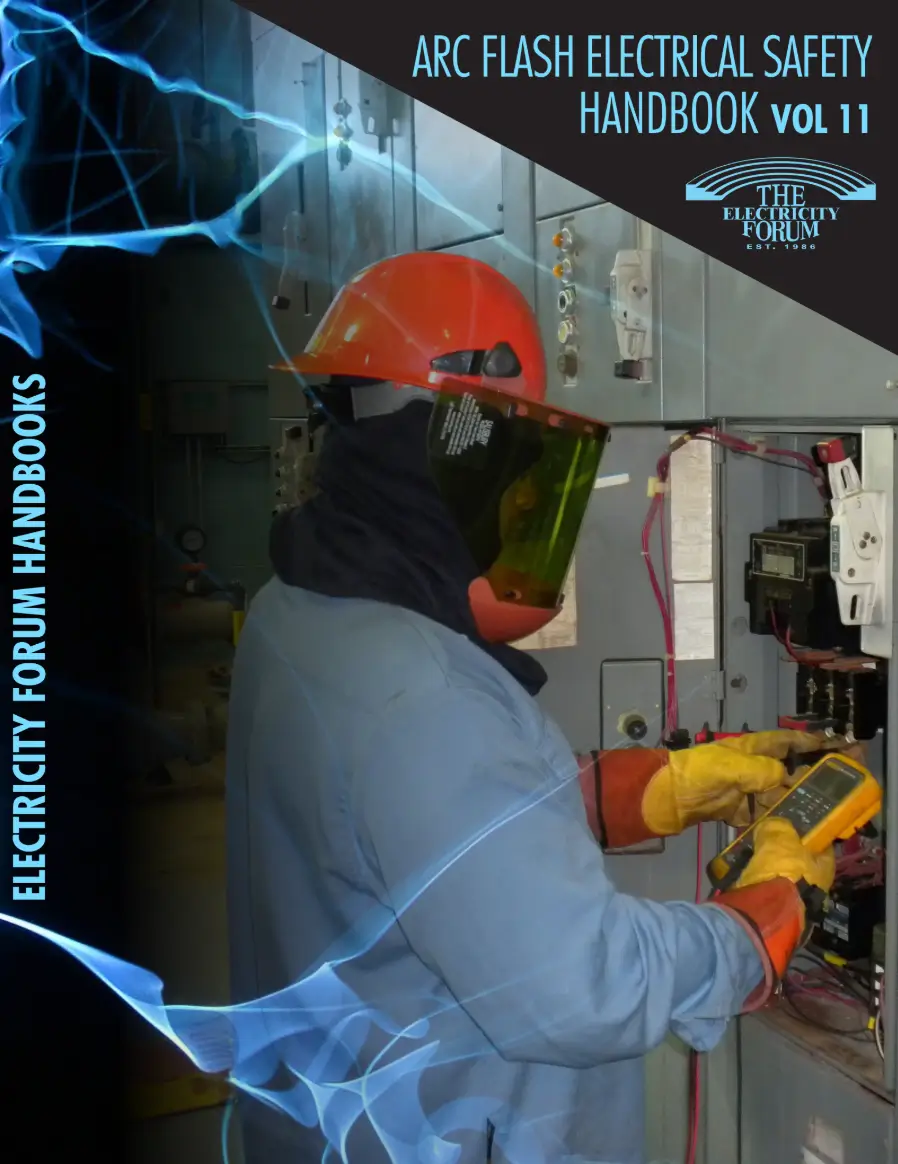Short Circuit Study & Protective Device Coordination course is designed for utility, industrial, commercial and institutional power system electrical engineering personnel, electrical consulting engineers, as well as electrical design engineers, who are responsible for the reliable design, engineering and operation and of industrial, commercial and insitutional electric power distribution systems. Plant, facility, and corporate electrical engineers dealing with one or more company distribution systems and consulting and utility engineers dealing with clients' systems. Consultants, architect-engineers will also find this course very beneficial.


In-person Group Training

Live Online Group Training
Short Circuit Study & Protective Device Coordination
The registration fee for this course is $699.
$599 (with coupon: save $100)
Register 3 delegates at full price $699, and get a 4th registration FREE!
This 12-Hour (2 Day) Short Circuit Study & Protective Device Coordination Study live online instructor-led course gives students an understanding of what is involved in performing both a Short Circuit Study and a Protective Device Coordination Studies on industrial, commercial and institutional power systems.
This course should be taken with our Power System Fundamentals Course - April 10, 2026
This course is also a companion to our Arc Flash Analysis Training Course - April 23-24, 2026
Short Circuit Study & Protective Device Coordination
A power system study is a crucial document for any power system. Even small power systems are having power system studies performed to comply with more stringent codes and regulations. Due to the high reliability requirement imposed upon the operation of data centers it is an absolute necessity.
A power system study typically consists of three studies: Short Circuit Study, Protective Device Coordination Study, and Arc Flash Study. While these individual studies may sometimes be considered separately, they are very much interrelated. It is therefore recommended that these studies be conducted simultaneously by the same engineer(s) to ensure the most accurate results.
Short Circuit Study
The purpose of a short circuit study is to identify the maximum available fault current at all locations, called busses, in the power system. It is then compared with the ratings of the individual power system components to determine if the equipment is adequately rated to safely withstand or interrupt the calculated fault current. The results of the short circuit study are also used in both the coordination study and the arc-flash study.
Protective Device Coordination Study
The purpose of a protective device coordination study is to determine the proper settings for overcurrent protective devices in the power system. Ideally, the selection of the proper settings will both protect the power system equipment as well as remove only the smallest portion of the electrical system as necessary from service in order to isolate a fault. In most cases however compromises must be made in order to provide the best overall system reliability.
A Short Circuit Study is the analysis of an electrical system that determines the magnitude of the currents that flow during an electrical fault. Comparing these calculated values against the equipment ratings is the first step to ensuring that the power system is safely protected. Once the expected short circuit currents are known, a Protective Device Coordination Study is performed to determine the optimum characteristics, ratings, and settings of the power system protective devices.
This Short Circuit Study & Protective Device Coordination Study course gives students an understanding of what is involved in performing both a Short Circuit Study and a Protective Device Coordination Study.
The Short Circuit Study course module will provide students with an understanding of how to calculate short circuit levels on three phase power systems. One of the important purposes of calculating short circuit levels is to facilitate the application and setting of protective relays.
This Short Circuit Study course module will present the fundamentals of power system protection so that attendees will understand:
- Impact of short circuits on power systems
- Use of per unit systems and comparison with physical units
- Symmetrical components
- Manual calculations of balanced and unbalanced short circuits
- Network and machine data for short circuit calculations
- Applications of short circuit studies
- Short circuit model validation
The Protective Device Coordination Study course module will provide students with an understanding how overcurrent protection is applied to power distribution systems.
This course will present the fundamentals of distribution system protection so that attendees will understand:
- Why overcurrent protection works
- System grounding
- Time current characteristics
- Fuse protection
- Overcurrent relays
- Selective coordination
- Current Time Intervals (CTIs )
Live online course schedule
Sign Up For Our Electrical Training Newsletter – Stay Informed!

Who should attend
What you will get






Short Circuit Study & Protective Device Coordination Training Course Outline
DAY ONE
- Short Circuit Theory and Analysis
- Effect of Short Circuit, Arcing and Burning
- Fault Current Sources
- Utility System, Motor and Generators
- Fault Current Types and characteristics
- Symmetrical Versus Asymmetrical Fault currents
- AC and DC decrements
- Fault Calculations, impedance modelling
- Balanced Faults and Unbalanced fault
- Symmetrical Components
Balanced Fault Calculations
- Ohmic Model
- Percent Model
- Per-unit Model
- Select and Calculate Base Values
- Data Collection and Modelling
- Data Requirements
- Utility short circuit currents and X/R ratio
- Fault calculation procedure
- Per-Unit Impedance calculations
- Complex Impedance diagrams
- Machine reactance modelling
- Thevenin equivalent networks
- Infinite Bus Calculations
- Exercise – Per Unit Modelling
- Typical Industrial Power Systems modelling using EasyPower software
Electrical Equipment Ratings:
- Switchgear Rating and selection criteria
- Protective device Interrupting Ratings
- Equipment components withstand ratings
- Low Voltage Fuse and Circuit Breakers rating and selection
- Medium Voltage Power Circuit Breaker and Power Fuses Rating and selection
- Load Interrupters
- Busway and Conductors
- Equipment duty calculations
- Fully rated systems
- Low voltage series rated equipment
- Sample Calculations
Transformer Protection
- Need for protection
- Types of transformers
- Transformer Data
- Causes of transformer overheating
- Transformer primary protective device
- Transformer through-fault capability
- Factors affecting transformer protection
- Basic transformer protection
- NEC and CEC requirements
- Coordination criteria
DAY TWO
Generator Protection
- Generator protection introduction
- Classification of generator applications
- Generator decrement characteristics
- Short-circuit performance
- Generator protective device
Conductor and Bus Protection:
- General consideration
- Cable protection
- Short-circuit current protection of cables
- Overload protection of cables
- Physical protection od cables
- Code requirements for Protection of cables
- Busway protection
Motor Protection
- Factors to consider in protection of motors
- Types of protection
- Overcurrent protection
- Low-voltage motor protection
- Low voltage motor ground-fault protection
- Medium-voltage motor protection
- Application of stator winding temperature protection
Overcurrent Coordination Fundamentals:
- Overcurrent protection general consideration
- Overcurrent protection guidelines
- TCC Plots
- CTIs
- Data collection for coordination study
- Phase coordination
- Ground-fault coordination
- Ground-fault protective schemes
Fuse Characteristics:
- Low Voltage Fuses
- Power Fuses
- TCC Curves
- Fuse Coordination Criteria
- Current-limiting characteristics
- Application of low-voltage fuses
LV Circuit Breaker Characteristics:
- Molded Case Circuit Breakers (MCCBs)
- Low Voltage Power Circuit Breakers
- Time Current Curves (TCC)
- Coordination Criteria
Time overcurrent relays
- Introduction
- Electromechanical Relays
- Relay Characteristics
- Solid State Relays
- CTIs
EasyPower System Modelling Exercise
Course Schedule
Start: 10 a.m. Eastern Time
Finish: 4:30 p.m. Eastern Time

Live online course registration fees & CEU credits
The registration fee for this course is $699.
What you will get






Download free discount coupon
Enter Your Information
Fill out the form below with your name and email address.
Receive Your Coupon
Check your email for a message with a link to your $50 discount coupon.
Register for the Course
Use the coupon code when you sign up for the Advanced Electrical Safety Training course to save $50 off the regular price.

Group Offer
Register 3, Get 1 Free
Register 3 delegates at the full price of $249 each and get the 4th registration free! Perfect for companies, safety departments, and teams looking to train multiple employees at once.
Earn Continuing Education Unit (CEU) Credits
- Successful completion of this course qualifies delegates to receive a certificate of course completion with indicated CEUs.
- CEUs are granted by the Engineering Institute of Canada.
- One CEU is equivalent to 10 professional development hours of instruction.
- This course earns 0.6 CEUs.

Request a free training quote – Live Online & In-Person Group Training
Whether you choose live online or in-person instruction, our electrical training can be customized to your needs and delivered to your team at one or multiple locations.
Our instructors will work with you to assess your team's skills and tailor the training to match your requirements.
Complete this handy form and I will send you a FREE written Quotation on any electrical training you need! Or send me an email and I will contact you to discuss your electrical training requirements Today!
Get the 2026 Live Online Training Catalog
Explore 50+ live, expert-led electrical training courses – interactive, flexible, CEU-certified.
Download Catalog
Download Course Brochure
Get detailed information about this course in our comprehensive brochure.
Download Brochure (PDF)Download free discount coupon
Enter Your Information
Fill out the form below with your name and email address.
Receive Your Coupon
Check your email for a message with a link to your $50 discount coupon.
Register for the Course
Use the coupon code when you sign up for the Advanced Electrical Safety Training course to save $50 off the regular price.

Group Offer
Register 3, Get 1 Free
Register 3 delegates at the full price of $249 each and get the 4th registration free! Perfect for companies, safety departments, and teams looking to train multiple employees at once.



